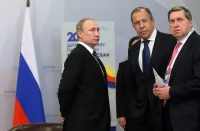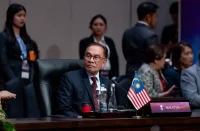Andrey Volodin (Russia)
Relations between China and India, the two most populous countries in the world, are marked by a complex and shifting combination of cooperation and rivalry. The complexity reflects the history of their geopolitical interaction and their positions in the world economy and international relations
In analyzing Sino-Indian interaction, it is necessary to take into account both objective trends and the social and psychological background, i.e. public opinion in both countries; the background is by no means always friendly, with claims and suspicions existing on both sides of the Sino-Indian border.
The political elites in the two countries admit that China and India have major common interests: building a multipolar/polycentric world and coordinating positions on such global problems as climate change and fair trade terms.
At the same time, there are contradictions that are inevitable between two countries that seek to gain access to the world markets and non-renewable energy sources, above all oil and gas. And yet the consensus among political experts is that the Achilles heel of bilateral relations is the “territorial issue.”
The problem was inherited from the period of colonial rule: under the Simla Accord of 1914, part of Tibet (south of the “McMahon Line”) was awarded to British India. Since 1947, India has acted on the basis that the border between the two countries runs along this line. China, for its part, has never recognized the “McMahon line” as the state border with India arguing that Tibet had no sovereignty under international law and therefore had no right to conduct such negotiations.
Public opinion in India goes along with the position of the political elites in the two countries, favoring a “phased” solution of the “territorial problem,” but feels that in China’s view any solution means annexation of the north-eastern state of Arunachal Pradesh (known in China as “Eastern Tibet”).
In India, the “territorial problem” is often seen in the broad geopolitical perspective: China’s burgeoning growth has made it more aggressive, reviving xenophobic attitudes among its people, especially with regard to neighbors. There is an ingrained sense in Indian public opinion that China seeks to “surround” India in the zone of its vital interests, i.e. in South Asia. Leading India media outlets, including television, regularly remind the public that China is rapidly modernizing its bases in the Indian Ocean and in Pakistan, Myanmar and Sri Lanka. The Indian Navy is worried by the opening of a hidden (“underground”) Chinese nuclear submarine base on Hainan Island “which threatens India’s national security.” India’s military and political leaders are “surprised” by massive “non-civilian” construction in Tibet (six high-mountain launch pads), which allegedly enables China to deliver up to 20,000 troops to any point on the Sino-Indian border within two hours. (In retaliation, India has deployed Sukhoi planes in the north-eastern segment of the common border).
At the same time, India is not inclined to think that China’s military buildup will translate itself into military clashes on the common border.
Beijing too has some bones to pick with India. Thus, China fears that the idea of an “alliance of four democracies” (the US, Japan, Australia and India) proposed by the previous US (Bush) Administration has the aim of “surrounding” China, with India playing the key role in the south. Nor is Beijing oblivious of the ambition of the Indian political elite to score a “final economic victory” over China by 2025-2030. Finally, China is watching with some concern the development of India’s rocketry, including means of delivering nuclear warheads.
Even so, the relations between China and India are developing progressively, driven by the political will and the wish to shed the past demonstrated by the leaders of the two countries, Hu Jintao and Manmohan Singh. Both leaders proceed on the basis that their countries are great continental powers and that this is the time of a sea change in world politics: “the ruler of the waves” (first England and later the US) are yielding geopolitical initiative to the “continental giants,” including China and India.
Another important area of accord has to do with the shared understanding of the role of economics and foreign economic ties as important elements of modern geopolitics. According to (probably inflated) Indian data, in 2010 trade between the two countries will reach $75 billion ($45-50 billion is more realistic) and in 2015, $225 billion. Even though the last figure is patently an exaggeration, the twin goal of the two countries’ leaders is clear: to do as much as possible to stimulate industrial modernization and create in India and China influential forces which have a vested interest in the progressive development of bilateral relations.
Of late (since around 2008), the problem of growing rivalry on the regional and partly global levels has been coming to the fore in Sino-Indian relations. There are deepening differences over security issues in South Asia and in the Indian Ocean, which leads to a “deficit of strategic mutual trust.”
Chinese analysts are worried about India’s growing activity in Indochina, which China considers to be its zone of influence. In response to the Indian “challenge,” there is a move to further strengthen ties with Pakistan and develop contacts with such countries as Bangladesh and Nepal, with which India’s relations are edgy.
The Chinese are also worried about the intensifying military ties between the US and India against the background of overall improvement of relations. Beijing believes that Barack Obama’s recent decision to “unfreeze” the American-Indian nuclear agreement has the strategic aim of strengthening the “Indian flank” of America’s effort to counteract the strengthening of China’s position in the Asia Pacific Region.
While the trade and economic ties between China and India are growing, there is the problem of the Indian trade deficit and of the structure of foreign trade (the bulk of India’s exports to China are commodities while its imports from China are largely manufactured goods).
Competition for energy resources is becoming more and more of a problem in the Sino-Indian relations. Both desperate to import oil, China and India have more than once clashed in the struggle for access to hydrocarbons in Central Asia (Kazakhstan), Latin America, Angola and Nigeria, as well as in Myanmar. Chinese experts describe the situation as “competitive rivalry.” So far, China has been winning out by offering a higher price and a package of economic aid and investments in the infrastructure of the recipient countries.
China may see India as its strategic rival in the long term (and perhaps in the medium term). However, at present Beijing is interested in maintaining normal and stable relations with Delhi because of its domestic problems and proceeding from its short-term and long-term foreign policy priorities.
Recent changes in India’ leadership are important in putting the relations between China and India on a pragmatic and mutually beneficial footing. Shiv Shankar Menon, former Indian ambassador to China, has been appointed the Prime Minister’s national security adviser. Shiv Menon is known as an adherent of a new approach to relations with China devoid of the former fears and prejudices. The new approach to China, Indian political analysts believe, is based on the perception of China as a country that does not only boast spectacular economic achievements, but also has serious domestic problems which preoccupy the party and state leadership.
“An effective economy is the main condition for an effective foreign policy”, sums up the reasoning of the strategic elites in India and China, which makes the relations between the two countries more predictable than some segments of the public opinion in both countries believe.
Why does Russia have a vital stake in a “harmonious” relationship between India and China? There are several reasons, of which I would single out three:
1. The tranquility and well-being of Russia, India and China depend directly on social stability and the territorial integrity of the “new independent” states of Central Asia, formerly Soviet republics. Recent events in Kirgizia have made it abundantly clear that political Islam and its extreme manifestation, i.e. international terrorism, must be countered not only by an effective development policy (economic growth, job creation and equal distribution of national wealth), but also by the concerted will of the major Eurasian states to thwart the attempts of religious radicals to destabilize the internal situation in this potentially explosive region.
2. The transformation of the “post-American” world (i.e. no longer unipolar, but not yet structured in a new way) into a poly-centric one will take at least 10-12 years. During this period, a new configuration and a new quality of international institutions for control, cooperation and coordination of interests should be put in place. Coordinated action from India and China, the potential leaders of the world economy, will go a long way to ensure a just and stable future for the world.
3. China and India, acting together, are capable not only of solving their complex internal problems which accompany any development process. The two Asian giants can contribute to the emergence of a new culture of interstate relations based on two simple and exhaustive principles: peace and development.
I hope that Russia will actively join the work of erecting a new edifice of world policy.
Andrey Volodin, Dr.Sc. (History), is a fellow of the Russian Institute of World Economy and International Relations (Moscow).
Source: Russia & India Report, May 2010














Comments